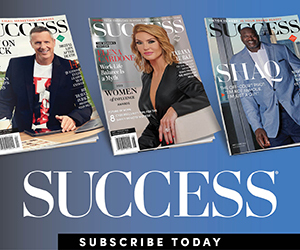What if your life’s work was equated to the stuffing in a sofa cushion? That’s what British actor Emma Thompson says is happening when people call her work “content.” Creatives are speaking up, scrutinizing the connotation of the word, and thinking critically about art vs. content, after the famed Love Actually star pushed back on the term at the Royal Television Society conference in September.
It’s part of a larger conversation, she explains, in bridging the gap between creatives and executives amid concurrent WGA and SAG-AFTRA strikes, Variety reports. “Everyone is affected,” Thompson noted. “You know, I’ve been writing to friends who are crew people, who are costume people, who are makeup people who aren’t working. It’s a very, very, very hard time; people are suffering so much.”
Speaking to an audience that included the future creatives of the world, Thompson asserted that the word “content” sounded merely like the stuffing of a sofa cushion, and called it “rude.”
“‘Content.’ What do you mean ‘content’?” she asked. “It’s just rude, actually. It’s just a rude word for creative people… you don’t want to hear your stories described as ‘content’ or your acting or your producing described as ‘content.’ That’s just like coffee grounds in the sink or something. It’s, I think, a very misleading word.”
‘Content’ implies consumption and sales
Thompson opens the conversation around just how much words matter when it comes to valuing creatives, whether you are working for them, with them or leading a team of them. From filmmakers and actors to writers and designers and artists, the word “content” has become a catch-all for creative work across industries, and lacks specificity, to Thompson’s point.
“For some creatives, the word ‘content’ may have a connotation with being more disposable due to the fast pace of social media,” says Jen Jones Donatelli, a certified creativity coach and the founder of Creative Groove, a small business that coaches and offers community programming around creativity and self-expression. “For an established actress with theater roots like Emma Thompson, that may feel like it degrades the idea of craft or thoughtfully produced material in favor of content that audiences can quickly consume.”
Art vs content
Jones Donatelli explains that the word ‘content‘ often implies there’s a sales pitch involved. “…Content is often created with the intention of selling something as opposed to telling a story—whether it be a YouTube makeup tutorial or a gift-buying guide filled with affiliate links,” she says. “That can go against the ethos of people who want to prioritize artistry over consumerism.” She adds that it can also just feel too general, like an umbrella term that lumps creative work from vastly different fields together: “Everything from movies to Instagram reels to SEO articles takes away from the uniqueness of each medium and makes it feel more generic.”
Another creative, an editor in the parenting journalism industry who wishes to remain anonymous, says, “I grapple with this all the time. I remember the first time my manager at a new job referred to everything I did as ‘content,’ and I hated it. It felt commodified and so far from what I did creatively.”
“A lot of the media created today wouldn’t exist if it didn’t need to function as a consumer touchpoint or at the very least a vehicle for a sales pitch,” adds Dane O’Leary, a creative director and visual designer in Winchester, Virginia. “The way we view content is less about what’s being created and more about the action that the media is designed specifically to incite. It’s a really interesting thought that raises some fascinating questions, like: Are less people making content for its own sake? Or is there simply so much media being generated for marketing campaigns that it drowns out all of the ‘real’ stuff? But since even artists need to support themselves, maybe this shift in perspective was an inevitability.”
‘Content’ broad-brushes intention and purpose
Beth Booker is the CEO and founder of the Naples, Florida, public relations agency Gracie PR. She’s often consulted as a public perception expert, and says that though she makes and posts content herself, it shouldn’t be synonymous with the work a producer or actor creates. “Using a catch-all phrase like ‘content’ to describe the work of professionals in the entertainment industry is rude. Language matters, and while I know that a lot of strategy and creativity goes into content creation, it isn’t the same type of strategy and creativity that goes into filmmaking,” she says.
Using the word “content” as a blanket phrase diminishes the talent of those who create art “with intention and purpose,” Booker says.
‘Content’ is too broad
Let’s call it what it is. So what is it? Filmmaking isn’t content marketing, and copywriting isn’t graphic design. There is a difference between content vs. art because all of these things that could be content, and technically are content, don’t have to be referred to in the exact same way. So, while the term ‘content’ is effective as a catch-all, it points to laziness in word choice.
“It isn’t ‘rude,’ but it is a very vague term that has come to mean anything and everything relating to creative work and marketing,” says Amanda Green, a corporate content manager in Orlando, Florida. “A TikTok comedian is a ‘content producer,’ and so is an academic white paper writer, a graphic designer, a video journalist, a science reporter, a Twitch gamer, a meme creator, a tech reviewer, a social media manager, an SEO expert… Do you see the problem? It’s very difficult to find jobs in this industry because ‘content’ is such a generic term.”
The age of AI complicates content
“The word ‘content’ has become particularly sensitive in the age of AI,” says Jessica Siegel, a writer and former journalist who now runs a creative agency. “As companies struggle to keep up with an ever-growing consumer desire for new movies, music, social media posts, blogs and videos, there is a growing tension around where all of that creative work will come from.” She also recently led a workshop on how professionals in the social sector can ethically and efficiently harness the power of AI without losing the essential human touch.
“As we’ve seen, many producers and organizations are turning to AI to try and fill this void. It makes sense: AI is fast and cheap, and if you’re just looking for SEO hits, it does the job,” Siegel says. “But where it can become offensive is when we confuse ‘content’… with ‘art’… It takes a human mind—and a talented one, at that—to create art. The difference between these two things is where the offense comes in. We need clearer boundaries on what is content and what is something much more.”
But we don’t have to just say ‘content’—try this instead
“I recommend always being as intentional as possible with the words you use when speaking about your work,” Booker says. “Each creative brings something different to the table, making creative work dynamic and expressive because it has our own personal touches.”
She recommends those working with, above and under creatives to follow a few language strategies to ensure they respect creatives’ work:
- Be as specific as possible to highlight what makes your work unique and impactful. This is why storytelling is so powerful. You want people to feel connected to your work and your why.
- You should be mindful about adapting that language to different audiences and contexts. Allow yourself to alter that language as your brand grows and changes.
- Mull over words that matter, but be concise and impactful—not long-winded.
When in doubt, ask the artists—be it an actor, writer, designer or influencer—what they prefer to call their work. It’s pretty unlikely they’ll respond with “content.”
Photo by Rawpixel.com/Shutterstock.com



